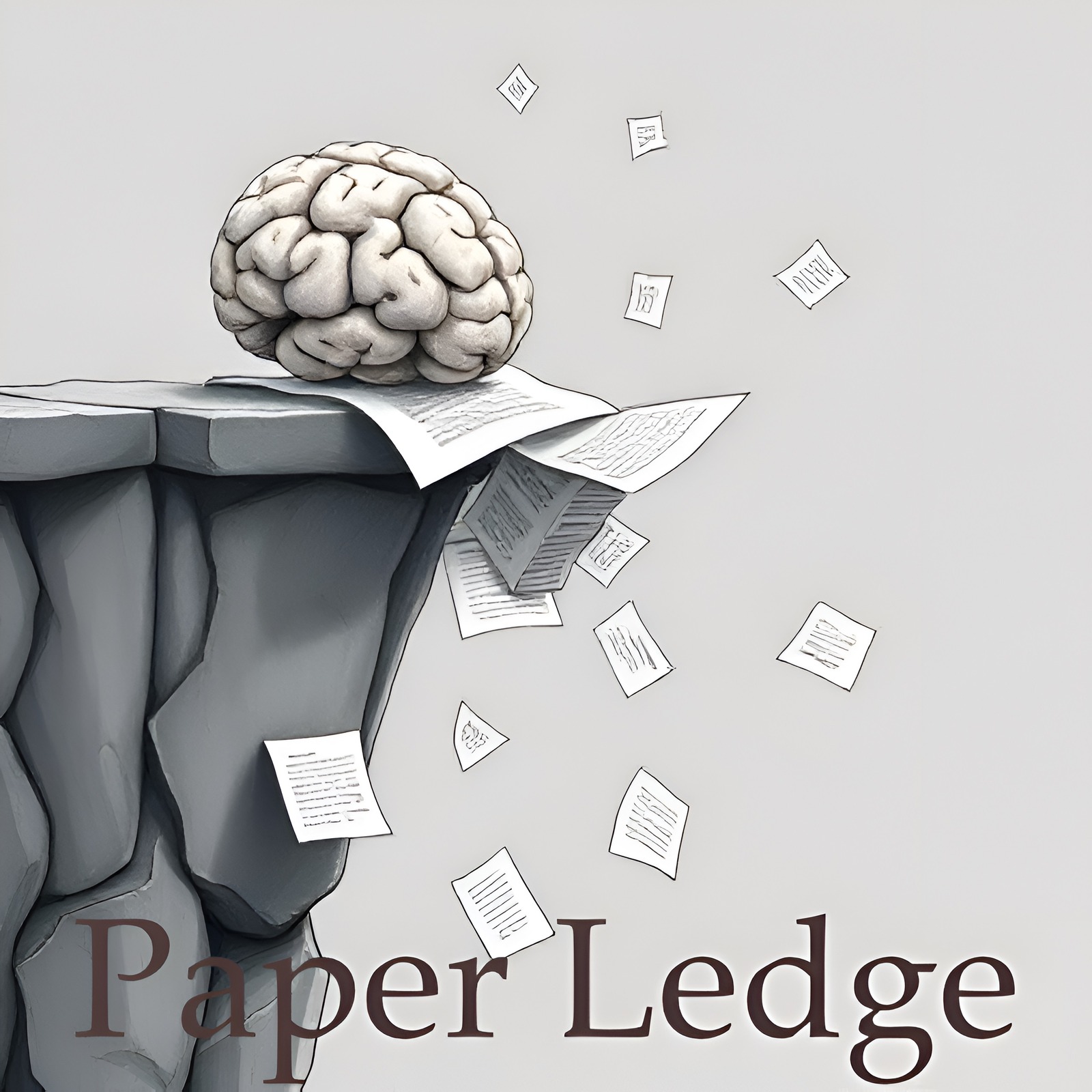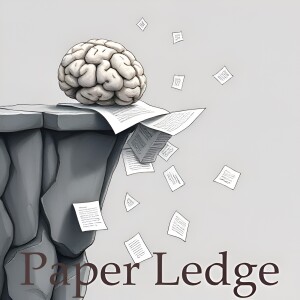PaperLedge

PaperLedge where research meets storytelling is a revolutionary podcast where cutting-edge research meets AI-powered storytelling. Hosted by the Ernis, whose blend of gentle reassurance, cosmic wonder, explanatory clarity, and enthusiastic charm makes complex research accessible to everyone. Each episode, Ernis transforms the latest academic papers into engaging, jargon-free audio experiences that deliver key insights in digestible formats. Whether you’re a researcher seeking interdisciplinary perspectives, a student supplementing your studies, or simply curious about scientific breakthroughs, PaperLedge has something for you.
Episodes
Episodes



Tuesday Sep 30, 2025
Tuesday Sep 30, 2025
Hey PaperLedge crew, Ernis here, ready to dive into another fascinating piece of research! Today, we're tackling a paper that looks at how we make tough decisions when there are lots of things to consider – think about choosing a new phone. Do you prioritize camera quality, battery life, price, or the cool factor?
This paper is all about multicriteria decision-making, which is just a fancy way of saying "making choices when you have lots of different criteria to juggle". These methods are used everywhere, from city planning to figuring out the best investment strategy. But here's the kicker...
The researchers found that the way you normalize the data – that is, how you put all those different criteria onto the same scale – can drastically change the final outcome. Imagine you're judging a talent show. One person's singing score might be out of 10, while another's dancing score is out of 100. You need to get them on the same scale before you can compare them fairly, right?
Well, according to this paper, the normalization method you choose can swing the final rankings by a whopping 20-40%! That's huge! It’s like saying the way you convert those scores determines whether the singer or dancer wins. And currently, the paper argues, people are often just picking normalization methods randomly, without really checking if their results are solid.
“Current practice is characterized by the ad-hoc selection of methods without systematic robustness evaluation.”
So, what did these clever researchers do? They built a framework – think of it as a super-powered tool – that automatically explores all the different ways you could normalize the data. They used something called Scikit-Criteria, which is like a set of LEGO bricks for building decision-making models, to try out all possible combinations.
This lets them see how sensitive the results are to different normalization techniques. Are some options consistently ranked highly, no matter how you scale the data? If so, that's a pretty robust choice! But if a small change in normalization completely flips the rankings, then you know you're on shaky ground.
Why does this matter?
For decision-makers: It highlights the importance of being aware of the assumptions you're making and testing how robust your decisions really are.
For researchers: It provides a tool to conduct more rigorous and transparent analyses.
For everyone: It reminds us that even seemingly objective methods can be influenced by subjective choices.
This research is important because it helps us make more informed and reliable decisions. It encourages us to question our assumptions and to be more transparent about the choices we make when analyzing data.
Here are a couple of questions that popped into my head while reading this paper:
If normalization is so critical, should there be standardized, "best practice" methods for certain types of decisions? Or is the choice always context-dependent?
How can we best communicate this uncertainty to stakeholders who may not be familiar with the technical details of multicriteria decision-making?
That's it for this week's deep dive! I hope you found that as interesting as I did. Let me know what you think in the comments, and I'll catch you next time on PaperLedge!Credit to Paper authors: Juan B. Cabral, Alvaro Roy Schachner



Tuesday Sep 30, 2025
Machine Learning - Rethinking Entropy Regularization in Large Reasoning Models
Tuesday Sep 30, 2025
Tuesday Sep 30, 2025
Hey everyone, Ernis here, and welcome back to PaperLedge! Today, we're diving into a fascinating paper that tackles a tricky problem in AI: teaching computers to reason better using something called reinforcement learning. But this isn't just any reinforcement learning; it's reinforcement learning with verifiable rewards, or RLVR. Think of it like giving a student a problem set, and then checking their work step-by-step, not just looking at the final answer. This helps the student – or in this case, the AI – understand why they got something right or wrong.
Now, these AIs are what we call large reasoning models (LRMs). They're like super-smart students who can handle really complex problems, like advanced math. RLVR has been showing a lot of promise in making these LRMs even better at reasoning. But here's the catch: these systems tend to get stuck in a rut. The researchers call this entropy collapse and premature convergence. It's like the student finding one way to solve a problem and then just sticking with that method, even if it's not the best one, or if it doesn't generalize to similar problems.
You might think, "Okay, well, let's just encourage them to explore more! To try different things!" And that's exactly what people have tried to do, using a technique called entropy regularization. It's like saying to the student, "Hey, don't just stick to what you know! Branch out! Try different approaches!" But, surprisingly, this doesn't really work well with these large reasoning models. Why? Well, imagine giving that advice to someone facing thousands of different possible actions and steps. It could lead to a global entropy explosion. It's like giving the student way too many options, so they just start randomly trying things without any real direction or focus.
That's where this new paper comes in. The researchers realized that the problem wasn't a lack of exploration, but a lack of focused exploration. So, they developed a method called SIREN (SelectIve entRopy rEgularizatioN). Think of SIREN as a smart tutor who knows which areas the student needs to explore more deeply. It limits exploration to a meaningful subset of actions and states.
How does it do this? Well, SIREN uses a two-step entropy masking mechanism. Imagine the tutor saying, "Okay, let's focus on the top 20% of the most promising approaches" (that's the top-p mask). And then, "Within that, let's really dig into the steps where you seem the most unsure or uncertain" (that's the peak-entropy mask). This way, the AI isn't just randomly trying things; it's focusing its exploration on the areas where it's most likely to learn something new.
They also use something called self-anchored regularization, which is a fancy way of saying they make sure the learning process stays stable and doesn't go off the rails. It's like the tutor providing consistent guidance and feedback to keep the student on track.
The results? Well, across five different math problems, SIREN significantly outperformed previous approaches. For example, on a really tough math challenge called AIME24/25, using a model called Qwen2.5-Math-7B, SIREN improved the accuracy by a whopping 6.6%! The researchers also showed that SIREN helps the AI maintain a good balance of exploration and exploitation, leading to more diverse solutions and preventing it from getting stuck in that premature convergence rut.
"SIREN promotes greater response diversity and maintains entropy at an appropriate level, which helps to preserve the validation pass@k throughout training. This effectively mitigates the premature convergence problem common in RLVR for LRM."
So, why does this matter? Well, for researchers, this is a big step forward in making reinforcement learning more effective for training large language models. It shows that we need to be smarter about how we encourage exploration, focusing on quality over quantity.
For developers building AI-powered tools, this means potentially creating systems that can reason more effectively and solve complex problems with greater accuracy.
And for everyone else, this research contributes to the ongoing effort to build more intelligent and capable AI systems that can help us in all sorts of ways, from scientific discovery to everyday problem-solving.
Here are a few things I'm pondering after reading this paper:
How can we adapt SIREN's approach to other types of AI models beyond large reasoning models? Could this be applied to image recognition or natural language processing?
What are the ethical implications of building AI systems that are increasingly capable of reasoning and problem-solving? How do we ensure that these systems are used responsibly?
The research focuses on mathematical benchmarks. How well does SIREN generalize to more real-world reasoning tasks that might be less structured or have more ambiguous solutions?
That's all for today's episode of PaperLedge! I hope you found this breakdown of SIREN insightful. Let me know your thoughts in the comments, and I'll catch you next time!Credit to Paper authors: Yuxian Jiang, Yafu Li, Guanxu Chen, Dongrui Liu, Yu Cheng, Jing Shao



Tuesday Sep 30, 2025
Tuesday Sep 30, 2025
Hey PaperLedge listeners, Ernis here, ready to dive into some fascinating research that's all about giving robots better brains… or at least, better navigation skills!
Today, we're talking about a paper that tackles a tricky problem: how do we get robots to understand their surroundings well enough to follow instructions like "Go to the living room and bring me the remote"? Seems simple, right? But for a robot, it's like trying to navigate a completely foreign world.
The researchers behind this paper were looking at Vision-and-Language Navigation (VLN). Think of it as teaching a robot to understand both what it sees (the vision part) and what it hears (the language part) to get where it needs to go.
Now, there are already robots that can do this to some extent. Many use Large Language Models (LLMs) – the same tech that powers things like ChatGPT – to help them understand instructions and figure out where to go. But here’s the catch:
Some robots try to describe the scene they're looking at in words, which can lose important visual details. Imagine trying to describe a painting only using a few sentences – you'd miss a lot!
Other robots try to process the raw image data directly, but then they struggle to understand the big picture, the overall context. It's like being able to see every pixel of a picture but not understanding what the picture is of.
So, how do we help these robots "see" the forest for the trees?
This paper proposes a clever solution: give the robot multiple descriptions of the scene from different viewpoints, and then use analogical reasoning to connect the dots.
Think of it like this: imagine you're trying to find your way around a new city. You might look at a map, read a description of the neighborhood, and maybe even see some pictures online. By combining all these different pieces of information, you get a much better sense of where things are and how they relate to each other.
The robot in this research does something similar. By using multiple textual descriptions, it can draw analogies between different images of the environment. For example, it might recognize that "a couch with a coffee table in front of it" is similar to "a sofa with a low table," even if the objects look slightly different. This helps the robot build a more complete and accurate understanding of its surroundings.
Why does this matter?
For robotics enthusiasts: This research shows a promising way to improve the performance of VLN agents, potentially leading to more capable and versatile robots.
For everyday listeners: Imagine robots that can reliably assist with tasks around the house, in hospitals, or in warehouses. This research is a step towards making that a reality.
For anyone interested in AI: This paper highlights the importance of contextual understanding and reasoning in AI systems, and demonstrates a creative way to address this challenge.
The researchers tested their approach on a standard dataset called R2R, and the results were impressive. They saw significant improvements in the robot's ability to navigate successfully.
So, what does all this mean for the future of robots and AI? Well, it suggests that by giving robots the ability to reason analogically, we can help them understand the world in a much more nuanced and sophisticated way. And that could open up a whole new world of possibilities.
Here are a couple of things that popped into my head while reading this:
Could this approach be adapted to other areas of AI, such as image recognition or natural language processing?
What are the limitations of using textual descriptions, and are there other ways to provide robots with contextual information?
That's all for today, folks. I hope you found this paper as interesting as I did. Until next time, keep exploring the fascinating world of AI!Credit to Paper authors: Yue Zhang, Tianyi Ma, Zun Wang, Yanyuan Qiao, Parisa Kordjamshidi



Tuesday Sep 30, 2025
Tuesday Sep 30, 2025
Hey PaperLedge learning crew, Ernis here, ready to dive into some seriously cool AI research. Today, we're tackling a paper that's all about making AI agents smarter over time – kind of like how we learn from our mistakes (and successes!).
The paper focuses on something called ReasoningBank. Now, imagine you have a super-powered assistant, an AI that helps you with tasks like browsing the web or even writing code. These AI assistants, called "large language model agents," are getting pretty popular. But here's the thing: right now, they're a bit like goldfish. They tend to forget what they've learned, making the same mistakes over and over again.
That's where ReasoningBank comes in. Think of it as a really, really good memory for these AI agents. Instead of just storing every single thing the agent does (which would be like trying to remember every detail of every conversation you've ever had!), ReasoningBank distills the important stuff – the reasoning strategies that led to success or failure. So, it's not just remembering what happened, but why it happened.
The researchers propose that the AI agent should learn from both good and bad experiences. Just like you might learn more from a mistake than from something you did perfectly the first time!
So, how does ReasoningBank work in practice?
First, the agent tries to solve a task.
Then, it judges whether it was successful or not.
Next, ReasoningBank analyzes the reasoning process and extracts the key strategies.
Finally, it stores these strategies in its memory bank.
Later, when the agent faces a similar task, it can pull relevant memories from ReasoningBank to help guide its actions. It's like having a wise old mentor whispering advice in your ear based on past experiences!
But the researchers didn't stop there. They also introduced something called memory-aware test-time scaling (MaTTS). This is where things get really interesting. MaTTS is all about giving the agent more resources – more "brainpower," if you will – to explore different approaches and learn even faster. Think of it like giving a student extra time and materials to work on a challenging problem.
By scaling up the agent's interaction experience, MaTTS helps it generate a wider range of experiences, which in turn leads to richer and more insightful memories. It's a feedback loop: better memories lead to more effective scaling, and more effective scaling leads to even better memories.
The results? The researchers tested ReasoningBank and MaTTS on tasks like web browsing and software engineering, and they found that it consistently outperformed other memory mechanisms. The AI agents became more effective and efficient at solving problems, learning from their experiences, and avoiding past mistakes.
"These findings establish memory-driven experience scaling as a new scaling dimension, enabling agents to self-evolve with emergent behaviors naturally arise."
That's a mouthful, but what it means is that by giving AI agents the ability to learn from their experiences, we can unlock new levels of intelligence and adaptability. They can essentially "self-evolve" and develop new and unexpected behaviors.
So, why does this research matter?
For AI researchers: It offers a powerful new approach to building more intelligent and adaptable AI agents.
For developers: It provides a practical framework for improving the performance of AI assistants and other applications.
For everyone else: It represents a step towards creating AI that can truly learn and grow over time, potentially revolutionizing many aspects of our lives.
This research suggests we can build AI that not only performs tasks but also learns and improves from experience. It's a really exciting step toward more capable and reliable AI systems.
Here are a couple of things I've been pondering:
First, if we're giving AI agents the ability to learn from their mistakes, how do we ensure they're learning the right lessons? What safeguards do we need to put in place to prevent them from developing harmful or unethical behaviors?
And second, as AI agents become more and more capable, how will this change the way we work and interact with technology? Will we see a shift towards more collaborative partnerships between humans and AI, or will AI eventually replace human workers in certain fields?
Lots to consider, learning crew. Until next time, keep those neurons firing!Credit to Paper authors: Siru Ouyang, Jun Yan, I-Hung Hsu, Yanfei Chen, Ke Jiang, Zifeng Wang, Rujun Han, Long T. Le, Samira Daruki, Xiangru Tang, Vishy Tirumalashetty, George Lee, Mahsan Rofouei, Hangfei Lin, Jiawei Han, Chen-Yu Lee, Tomas Pfister



Tuesday Sep 30, 2025
Tuesday Sep 30, 2025
Hey PaperLedge learning crew, Ernis here, ready to dive into some cutting-edge tech that's all about seeing faces, even when things get tricky!
Today we're talking about a research paper that tackles the challenge of facial keypoint alignment. Now, what is that? Think of it as pinpointing the exact locations of important features on a face – like the corners of your eyes, the tip of your nose, or the edges of your mouth. It's crucial for things like facial recognition, animation, and even augmented reality face filters.
The researchers were looking at how to do this, not with regular cameras, but with something called an event camera. These are super cool! Instead of capturing full frames like your phone camera, they only record when they see a change in brightness. Imagine it like this: instead of constantly snapping photos of a lightbulb, it only registers when you flip the switch on or off. This means they're incredibly fast and work well in low light and with really quick movements – perfect for situations where regular cameras struggle.
So, what's the problem? Well, existing face-tracking tech designed for normal cameras doesn't work very well with the data from event cameras. Event data has amazing timing information, but it can be a bit sparse visually. It's like trying to draw a portrait with only a few key lines – you might get the gist, but it's not as detailed as a full photograph. Plus, there aren't many readily available datasets of event camera footage showing faces, which makes training AI models difficult.
That's where this paper comes in! The researchers developed a clever system to overcome these hurdles. They used two main techniques:
Cross-Modal Fusion Attention (CMFA): Think of this as bringing in a "seeing-eye dog" for the event camera. It uses information from a regular camera (RGB data) to guide the event camera in identifying important facial features. It's like having a friend point out the key details in a blurry photo. This helps the system learn more effectively from the limited spatial information available in event data.
Self-Supervised Multi-Event Representation Learning (SSMER): This is like teaching the AI to learn from unlabeled examples. The system learns to extract useful information from a bunch of event data without needing someone to manually label all the faces. It's like learning to play the piano by listening to music and figuring out the patterns yourself, rather than having a teacher constantly telling you which keys to press.
By combining these two techniques, the researchers created a system that's much better at facial keypoint alignment using event cameras. They even created their own dataset of real-world event camera footage called E-SIE, and tested their approach on a synthetic (computer-generated) dataset, too. The results showed that their method beats other state-of-the-art approaches!
So, why does this matter? Well, imagine being able to track someone's facial expressions perfectly, even in the dark, or while they're moving around really fast. This could have huge implications for:
Security: More reliable facial recognition in challenging lighting conditions.
Healthcare: Analyzing subtle facial movements to detect pain or other medical conditions.
Virtual Reality/Augmented Reality: Creating more realistic and responsive avatars.
Robotics: Helping robots understand and interact with humans more naturally.
It opens up a whole new world of possibilities for how we interact with technology and how technology interacts with us.
Here's what I'm wondering:
How far away are we from seeing this technology implemented in our everyday devices, like smartphones or VR headsets?
What are some of the ethical considerations around using this kind of advanced facial tracking, especially in terms of privacy and surveillance?
That's all for this episode, crew! Keep learning, keep questioning, and I'll catch you on the next PaperLedge!Credit to Paper authors: Donghwa Kang, Junho Kim, Dongwoo Kang



Tuesday Sep 30, 2025
Tuesday Sep 30, 2025
Hey PaperLedge crew, Ernis here, ready to dive into some seriously cool research! Today, we're talking about human pose estimation – basically, figuring out where someone's joints are in a picture or video. Now, usually, this is done with models specifically trained for this task. But what if we could leverage something even bigger and more powerful... like a diffusion model?
Think of diffusion models like super-talented artists. They're trained to create images, starting from pure noise and gradually refining it into something beautiful and realistic. Models like Stable Diffusion are amazing at this! The paper we're unpacking introduces SDPose, which uses these diffusion models in a new way: for figuring out where things are in images, not just creating them.
So, how does SDPose work its magic? Instead of completely rebuilding the diffusion model, the researchers cleverly tap into its existing "understanding" of images. Imagine the diffusion model has a secret code for how images are built. SDPose is trying to decipher that code to find where key joints are likely to be. Instead of changing the core of the diffusion model (which can be tricky), they add a small, lightweight "pose head." This pose head is like a translator, taking the diffusion model's "image code" and turning it into a map of where the joints are most likely located, what we call keypoint heatmaps.
Here's the really smart part. To make sure SDPose doesn't just memorize the training data and become useless on new, different-looking images, they added another layer of complexity: an RGB reconstruction branch. Think of it like this: SDPose is not just trying to find the joints, but also trying to rebuild the original image. This forces it to learn general, transferable knowledge about images, not just specific details of the training set.
To test how well SDPose works in the real world, the researchers created a new dataset called COCO-OOD. It's basically the COCO dataset (a common dataset for image recognition), but with the images styled differently – like they were painted by Van Gogh or Monet. This domain shift is a real challenge for pose estimation models. The results were impressive! SDPose achieved state-of-the-art performance on COCO-OOD and other cross-domain benchmarks, even with significantly less training than other models.
But why is this important? Well, accurate and robust pose estimation has tons of applications. Think about:
Animation and gaming: Creating realistic character movements.
Human-computer interaction: Controlling devices with gestures.
Medical analysis: Tracking patient movements for rehabilitation.
Security: Identifying people based on their gait.
And because SDPose is built on a diffusion model, it can also be used for some pretty cool generative tasks. For example, the researchers showed how SDPose can be used to guide image and video generation using ControlNet, leading to more realistic and controllable results.
So, what does this all mean for you, the listener? If you're a researcher, SDPose offers a powerful new way to leverage pre-trained diffusion models for structured prediction tasks. If you're a developer, it provides a robust and accurate pose estimation tool that can be used in a variety of applications. And if you're just someone interested in the cutting edge of AI, it's a fascinating example of how different AI techniques can be combined to create something truly powerful.
Some questions that come to mind:
How far can we push this concept? Could we use diffusion models to estimate other things, like object boundaries or even 3D models?
What are the ethical implications of having such powerful pose estimation technology? How can we ensure it's used responsibly?
That's SDPose in a nutshell! A clever way to use diffusion models for pose estimation, with impressive results and exciting potential. Until next time, keep learning!Credit to Paper authors: Shuang Liang, Jing He, Chuanmeizhi Wang, Lejun Liao, Guo Zhang, Yingcong Chen, Yuan Yuan



Tuesday Sep 30, 2025
Tuesday Sep 30, 2025
Hey PaperLedge crew, Ernis here, ready to dive into some seriously cool research! Today, we're tackling a question that's been bugging AI researchers: Why are those fancy Vision Language Models, or VLMs – you know, the ones that can describe pictures and answer questions about them – sometimes, well, kinda…dumb?
I mean, these things ace standardized tests, but then you show them something a kid could figure out and…BAM! Total fail. It's like they're book smart but lack common sense. So, what's the deal?
This paper we're looking at today suggests it might be because VLMs struggle with something called visually-grounded serial processing. Sounds complicated, right? Let's break it down.
Think about it like this: imagine you're trying to find your keys. You don't just magically know where they are. You serially process information. You look on the table, then maybe in your coat pocket, then perhaps under the couch cushions. Each step depends on the last. That's serial processing.
Now, visually-grounded means doing that with your eyes – solving a visual puzzle, counting objects, or mentally rotating something.
The researchers hypothesized that VLMs struggle with these tasks because they aren't very good at breaking down visual problems into a series of smaller, manageable steps. It's like trying to eat a whole pizza in one bite – messy and probably impossible! Instead of taking things one step at a time, VLMs try to process everything all at once, and that can be overwhelming.
To test this, the researchers designed a series of tasks in three areas:
Geometric Reasoning: Think of this as shape puzzles. The more complex the puzzle, the more steps you need to figure it out.
Perceptual Enumeration: Just counting things. But they made it harder by crowding the objects together, forcing you to carefully count each one individually.
Mental Rotation: Like imagining turning a shape in your head. The harder the turn, the more mental steps required.
They compared how humans and VLMs performed on these tasks. Crucially, they also measured how long it took humans to complete each task. The longer it took a human, the more serial processing was likely involved.
And guess what? Across all the tasks, there was a clear trend: the more serial processing a task required (meaning, the longer it took humans), the worse the VLMs performed compared to humans! The VLMs' accuracy tanked as the human reaction time increased.
As tasks required composing geometric concepts, enumerating cluttered items, or performing complex mental transformations, the gap between VLM and human performance grew significantly.
"Limitations in serial, visually grounded reasoning represent a fundamental bottleneck that distinguishes current VLMs from humans."
In other words, VLMs struggle with tasks that require breaking down a visual problem into a series of steps, and this is a major reason why they sometimes fail at seemingly simple things.
Why does this matter?
AI Researchers: This gives us a clue about where to focus our efforts to improve VLMs. We need to find ways to make them better at serial processing.
AI Developers: This highlights the limitations of current VLMs. We need to be aware of these limitations when designing applications.
Everyone Else: It's a reminder that even the most advanced AI systems aren't quite as smart as we think. Human intelligence is still unique and valuable!
So, here are a couple of questions that popped into my head while reading this paper:
If VLMs are struggling with serial processing, how can we train them to get better at it? Can we design new architectures or training methods that encourage step-by-step reasoning?
Could this limitation explain why VLMs sometimes struggle with tasks that require common sense? Is common sense, at least in part, about being able to break down complex situations into a series of smaller, more manageable steps?
That's all for this episode, learning crew! I'm Ernis, and I look forward to discussing this with you all on our next episode!Credit to Paper authors: Nicholas Budny, Kia Ghods, Declan Campbell, Raja Marjieh, Amogh Joshi, Sreejan Kumar, Jonathan D. Cohen, Taylor W. Webb, Thomas L. Griffiths



Tuesday Sep 30, 2025
Tuesday Sep 30, 2025
Hey PaperLedge crew, Ernis here, ready to dive into some fascinating research! Today, we're tackling a paper that's all about how well AI can track changes in a patient's health over time using medical images. Think of it like this: imagine trying to figure out if a plant is growing better or worse, but instead of just looking at it today, you're comparing pictures from last week, last month, and so on. That's essentially what doctors do, and what this research is trying to get AI to do as well.
Now, existing AI systems are pretty good at looking at a single X-ray or scan and answering questions about it. But that's not how things work in the real world. Doctors don't just look at a single snapshot in time; they look at a patient's entire history to see how things are changing. That's why the researchers created something called TemMed-Bench. Think of it like a really challenging exam designed to test AI's ability to understand how medical conditions evolve over time.
So, what does TemMed-Bench actually do? Well, it throws three different types of challenges at these AI models:
Visual Question Answering (VQA): This is like asking the AI questions about a series of images taken at different times. For example, "Has the size of the tumor changed between the first and last scan?"
Report Generation: Here, the AI has to write a short report summarizing the changes it sees in the images over time. It's like asking the AI to be a junior doctor, writing up a summary of the patient's progress.
Image-Pair Selection: This tests if the AI can match images from the same patient but taken at different times. Sounds simple, but it requires the AI to really understand the underlying medical condition and its progression.
To make things even more interesting, they also created a huge library of medical knowledge – over 17,000 facts and figures – to help the AI out. Think of it as a super-detailed medical textbook that the AI can refer to.
The researchers then put a bunch of different AI models to the test, both fancy proprietary ones and open-source ones that anyone can use. And the results? Well, most of them weren't very good at all! The paper stated that "most LVLMs lack the ability to analyze patients' condition changes over temporal medical images, and a large proportion perform only at a random-guessing level in the closed-book setting." Many were essentially just guessing, which isn't exactly what you want when it comes to healthcare. Now, some of the more advanced models, like the GPT and Claude families, did a bit better, but they still have a long way to go.
Key takeaway: Current AI systems struggle to understand how medical conditions change over time using images.
But here's where it gets interesting. The researchers also tried giving the AI models extra help by letting them access even MORE information – not just the images and the knowledge library, but also relevant text from medical reports and research papers. This is called multi-modal retrieval augmentation. The idea is that if the AI can pull in information from different sources (images and text), it might be able to make better decisions. And guess what? It worked! The AI models performed significantly better when they had access to this extra information.
Think of it like this: imagine you're trying to solve a puzzle. You have the puzzle pieces (the medical images), but you're also allowed to look at the puzzle box (the medical reports and research papers) for clues. Suddenly, the puzzle becomes a lot easier to solve!
So, why does all of this matter? Well, imagine a future where AI can accurately track changes in a patient's health over time, helping doctors make more informed decisions and catch potential problems earlier. It could revolutionize healthcare! But, as this research shows, we're not quite there yet. We need to develop AI systems that are better at understanding the complexities of medical data and that can learn from a variety of sources.
And that's where you, the PaperLedge crew, come in! This research highlights the limitations of current AI and points the way towards future improvements. But it also raises some important questions:
How do we ensure that these AI systems are being trained on diverse and representative datasets, so they don't perpetuate existing biases in healthcare?
How do we balance the benefits of AI in healthcare with the need to protect patient privacy and data security?
What kind of regulations are needed to ensure that AI is used responsibly and ethically in medicine?
Food for thought, right? That's all for today's deep dive. Keep learning, keep questioning, and I'll catch you next time on PaperLedge!Credit to Paper authors: Junyi Zhang, Jia-Chen Gu, Wenbo Hu, Yu Zhou, Robinson Piramuthu, Nanyun Peng







